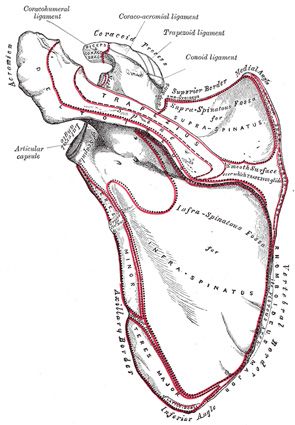#29 Blue Crab - Psychology of ACL Repair and PFJ Loading

This week’s edition features a deep dive into the psychology of recovering from ACL repair so you can learn more ways to keep your patients going through this long, challenging process. The researchers break down factors by concept analysis and give us a great window into what patients are thinking. After that, settle back into a comfortable piece on patellofemoral loading in lunges so you can build workouts just right.
King Crabs, our wonderful supporters who keep us going, got two more articles this week, one on metabolic health in adolescents and another on scapular mobes to help with rounded shoulder posture. Support what you love by subscribing to King Crab here.
With that, let’s dive in!
What are patients really saying? Read between the lines.
The Gist - Researchers in the Journal of Athletic training wanted to learn more about how to support patients in the long process of ACL repair. They used qualitative interviews combined with patient reported outcomes to find out what patients were thinking as they recovered. In their words, “Capturing these…components is important because negative psychological responses may act as barriers to successful rehabilitative outcomes after ACL.” Here’s what they found:
Based on outcome scales, subjects were split into high and low perceived disability groups. Those in the high group had more internal and external barriers, like fear of reinjury and feelings of incapacity (internal) and limitations on insurance coverage of treatment or treatment availability (external). Low disability groups tended to have more family and/or team support and an internal locus of control that high disability groups lacked.
Tell Me More - There’s a lot more in this open access paper so I highly recommend a full read. They use patient quotes to emphasize points and they’re quite powerful.
I think more mentally than physically, like I’m still cautious. The fear of retearing my ACL or doing something to screw up my surgery—I haven’t even gotten on a mountain bike since before my surgery because, is that one ride really worth being on crutches?
All patients, regardless of disability status, expressed negative emotional factors about some point of the process. Most patients expressed mental blocks to activity participation and fear of reinjury, but those in the low disability group were more effective at overcoming these feelings, though their methods of doing so remain opaque.
The biggest differences between the high and low disability groups were the facilitators to rehab. These were an internal locus of control, a stable support network, clear expectations of the recovery process, and fewer limitations during immediate post-op rehab.
Much more in the paper - Open access here.
PFJ Pain? Lunge it back now ya’ll.
The Gist - This one sums up real quick. Want to reduce PFJ loading in a lunge? Make it a back lunge. All PFJ loading variables are lower in back lunge. Boo yah.
This comes up because “A forward lunge has been shown to be part of an effective exercise program for the treatment of PFP,” but can also cause PFJ stress, so the researchers wanted to find out if a back lunge would take that away, and it did. On the up motion of the lunge, back lunges produced 9.5% less PFJ force than forward and the down portion produced 7.8% less. All research done in healthy women.
Tell Me More - As I said, this was done in healthy women who had no history of PFJ problems, so keep that in mind when generalizing. This hasn’t been tested at all in people with PFJ pain, but it is quite a positive result for them. The best, quick summary of all the data comes in the discussion section (usually the goldmine in papers), where they sum things up thus:
Findings support our hypothesis that the FL (forward lunge) produces greater PFJ reaction force, greater quadriceps force PFJ loading rate, knee flexion, ankle dorsiflexion and trunk forward tilt compared to the BL (backward lunge). No difference was shown in PFJ stress.
Some reasons behind that are iterated farther down, where researchers report that the front lunge increased PFJ force due to an increase in quads force, knee flexion angle, and PFJ reaction force, with quads force reaching a maximum of 5.17x body weight in this position.
Paper me. You got it. Not open access, but available here.
And that’s our week! Hope you enjoyed. As always, feel free to reply to this email with any questions, comments, or the like. I always love to hear from readers.
Bye!
